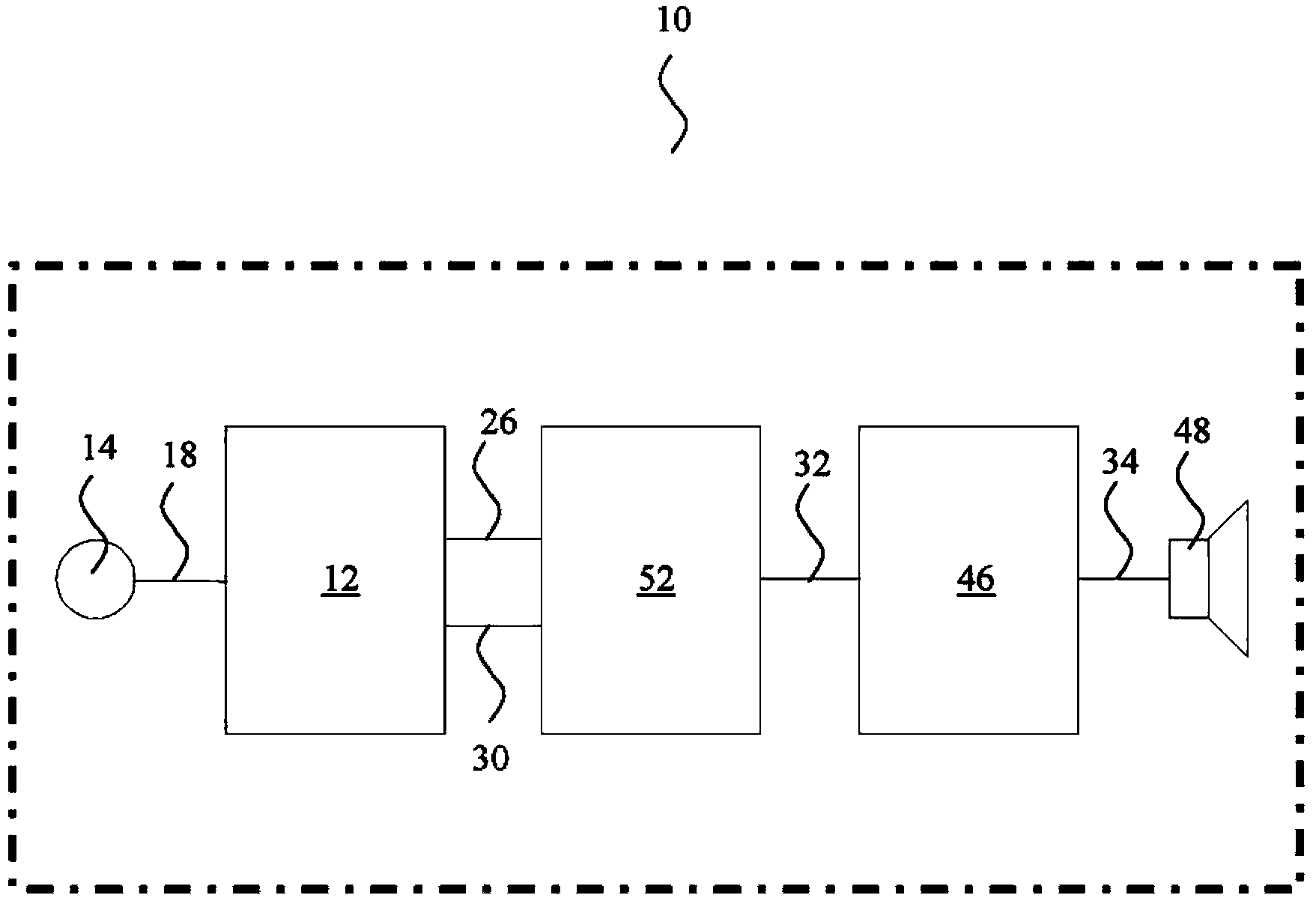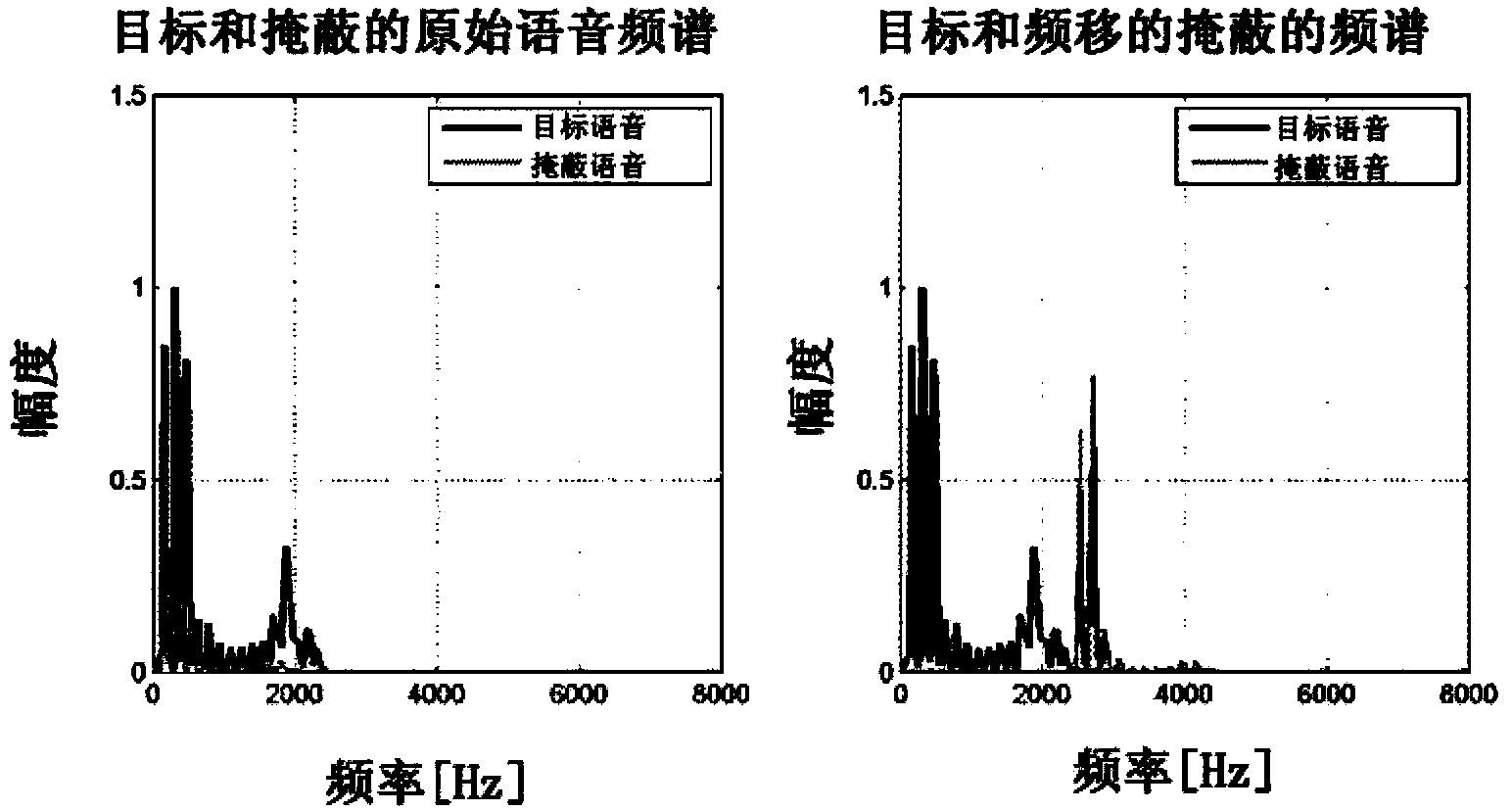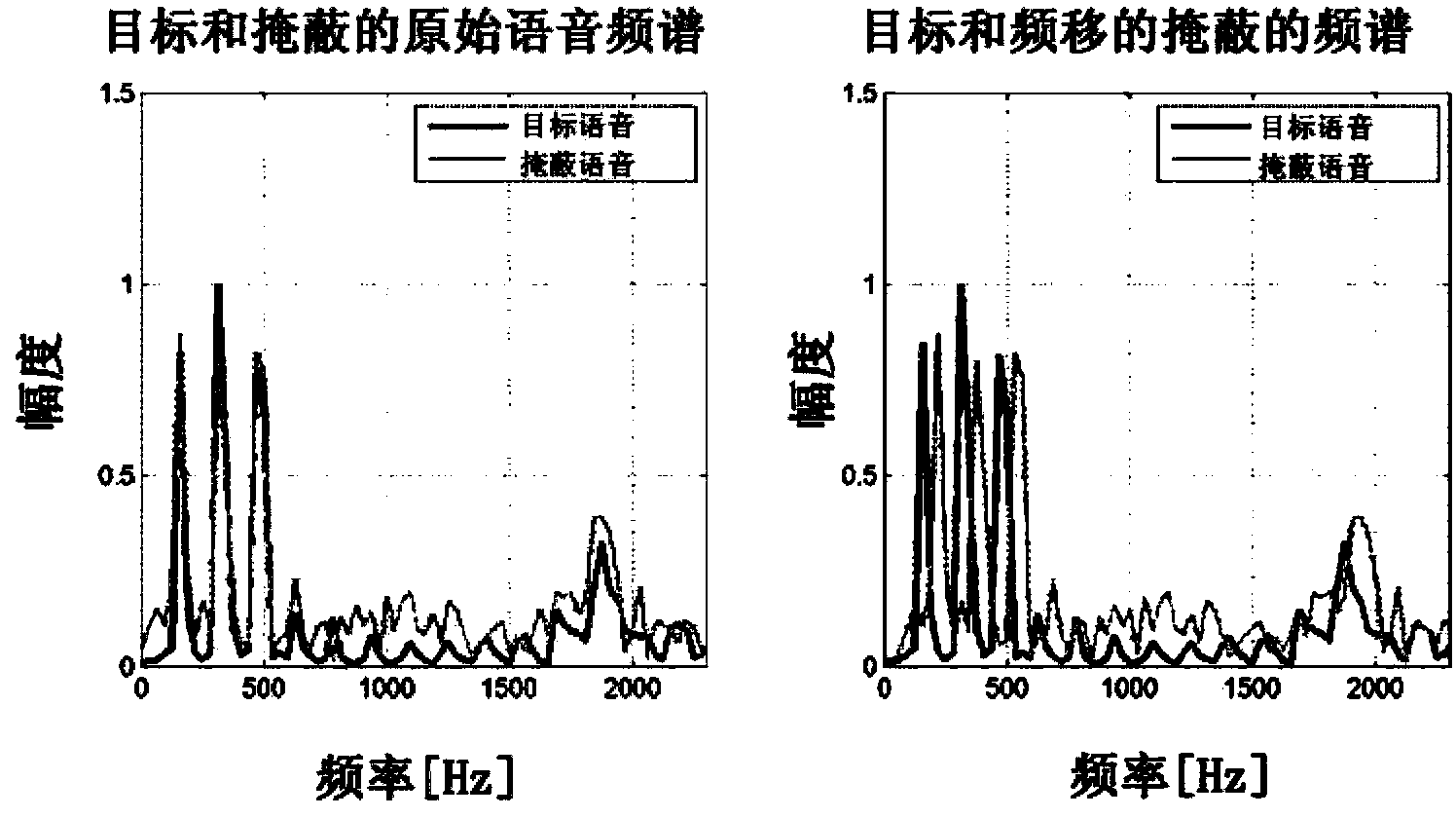Frequency-no-masking hearing-aid for double ears
A hearing aid, binaural technology, applied in hearing aids, electrical components, etc., can solve the problem of not considering the listener's wishes, and achieve the effect of improving speech intelligibility
- Summary
- Abstract
- Description
- Claims
- Application Information
AI Technical Summary
Problems solved by technology
Method used
Image
Examples
Embodiment Construction
[0102] figure 1 An example of the new binaural hearing aid 10 is schematically illustrated that operates to enhance a target signal by exploiting the ability of the human auditory system to focus on the target signal.
[0103] In the new hearing aid 10 shown, speech intelligibility is improved by outputting a target signal and a masking signal in different frequency bands to the ear drums of a user of the binaural hearing aid.
[0104] In this way, energy masking caused by simultaneous presentation of the target signal and the masker signal is reduced by separating the signal into different frequency bands.
[0105] It has been shown that for speech as the target signal and Gaussian noise as the masker signal, an SRT improvement of 15 dB can be obtained for listeners with normal hearing and approximately 10 dB for hearing impaired listeners.
[0106] This improvement is obtained without removing part of the signal; rather, the target and masking signals are presented to the u...
PUM
 Login to View More
Login to View More Abstract
Description
Claims
Application Information
 Login to View More
Login to View More - R&D
- Intellectual Property
- Life Sciences
- Materials
- Tech Scout
- Unparalleled Data Quality
- Higher Quality Content
- 60% Fewer Hallucinations
Browse by: Latest US Patents, China's latest patents, Technical Efficacy Thesaurus, Application Domain, Technology Topic, Popular Technical Reports.
© 2025 PatSnap. All rights reserved.Legal|Privacy policy|Modern Slavery Act Transparency Statement|Sitemap|About US| Contact US: help@patsnap.com



